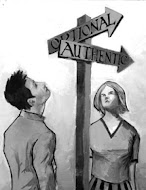the
Somatic Proprioception and the Bodily Self 161
most primitive forms of self-consciousness. One implication of this is that
it widens the scope of what might be termed the first-person perspective
far beyond the domain of humans, and even the higher mammals. This is
particularly significant for any philosopher who shares the plausible view
that self-consciousness, even in its primitive forms, carries with it a degree
of moral significance. A further implication more relevant to present concerns
is that the first-person nonconceptual contents of ecological perception
and somatic proprioception are the basic building blocks from which
the full-fledged self-consciousness associated with mastery of the firstperson
pronoun will eventually emerge, and hence are the raw material
from which to construct both an account of how the acquisition constraint
can be met for full-fledged self-conscious thought and a noncircular
explanation of the conditions of mastery of the first-person pronoun.
162 Chapter 6
7
Points of View
The previous two chapters have shown how somatic proprioception and
the structure of exteroceptive perceptual experience can be a source of
nonconceptual first-person contents from the very beginning of life. This
is an important start in dissolving the paradox of self-consciousness, because
it disproves the central assumption generating the paradox, namely,
that it is incoherent to ascribe thoughts with first-person content to an
individual who is not capable of employing the first-person pronoun to
achieve reflexive self-reference. But it is just a start, and what is required
now is an understanding of how we get from the primitive first-person
contents implicated in perceptual experience at the ecological level and
in somatic proprioception to the various high-level forms of first-person
thought that involve reflexive self-reference. How do we build up from
the pick-up of self-specifying information to full-fledged self-consciousness?
One promising strategy here is to identify certain fundamental dimensions
of self-consciousness that neither the perceptual pick-up of selfspecifying
information nor the degree of self-awareness yielded by somatic
proprioception can do justice to, and then to consider how such
basic-level information pick-up needs to be augmented if those dimensions
of self-consciousness are to come into play.
7.1 Conceptual Points of View and Nonconceptual Points of View
The previous chapter showed how somatic proprioception offers an
awareness of the body as a spatially extended and bounded object that is
responsive to the will. A major part of the significance of this is that it
offers the subject a way of registering the distinction between self and
nonself. It does this by marking the boundaries of the self. The boundaries
of the self emerge in somatic proprioception both as the limits of the
will and as the limits of felt feedback about the disposition and movement
of body parts. Crucial to this emergence is the sense of touch, which,
because it is simultaneously proprioceptive and exteroceptive, provides
an interface between the self and the nonself. As was also pointed out in
the previous chapter, registering the distinction between self and nonself
is a very primitive form of self-awareness. This is because self-awareness
has a very significant contrastive dimension. A central way of considering
a creature’s degree of self-awareness is in terms of its capacity to distinguish
itself from its environment, and no creature would be able to distinguish
itself from its environment if it did not have a minimal degree
of self-awareness to begin with. But once that minimal degree of selfawareness
is in place, the richness of the self-awareness that accompanies
the capacity to distinguish the self from the environment is directly proportionate
to the richness of the awareness of the environment from
which the self is being distinguished. There is, of course, very little such
richness in somatic proprioception, which, although it has an exteroceptive
dimension, provides relatively little information about the organization
and structure of the world. The world that manifests itself in somatic
proprioception is a world of surfaces, textures, and resistances—primitive
indeed in comparison with the causally structured world of physical
objects. And the form of self-awareness that emerges from somatic proprioception
is correspondingly primitive.
Thus, to make progress beyond the minimal registering of the distinction
between self and nonself that comes with somatic proprioception, we
need to consider the subject’s awareness of its environment. Philosophers
discussing self-awareness often place a lot of weight upon metaphors of
‘perspective’ and ‘point of view’. The point of these metaphors is to capture
certain characteristic aspects of how the environment is disclosed to
self-conscious subjects, as opposed to how it is disclosed to impartial scientific
investigation. There is more at stake here than a simple metaphorical
restatement of traditional and rather vague distinctions between
subjectivity and objectivity. The metaphors themselves put a distinctive
spin on the notion of subjectivity involved. In particular, they bring out
the centrality of spatiality in understanding self-conscious thought, be-
The so–called paradox of self–consciousness suggests that self–consciousness, understood as the capacity to think about oneself in a first–person way,Read More....
Followers
Saturday, 20 December 2008
Points of View
Posted by Admin at 12:55
Subscribe to:
Post Comments (Atom)




0 Comments:
Post a Comment